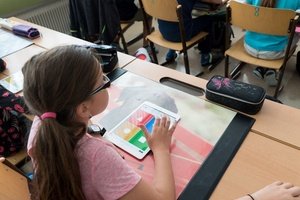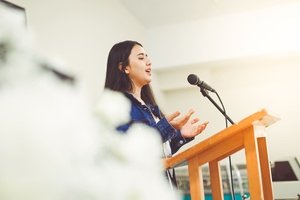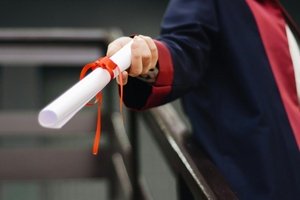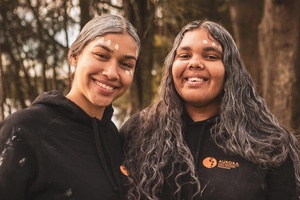Far from a sorry collection of mostly uneducated bruisers and ruffians from the streets of London and broader England, the many thousands of men, women and children transported from their homelands to Australia’s prison colonies included Scottish, Welsh and Irish nationals – among them a range of reformers and radicals, activists and agitators, all destined to play a critical role in shaping the nation.
“Few Australians realise their homeland was once the British Empire’s Guantanamo Bay, where about 3600 rebels, radicals and protesters were transported as political prisoners in the late 18th and 19th centuries,” Monash’s University’s Associate Professor Tony Moore, says.
“‘Death or Liberty!’ was the rallying cry of a stream of political exiles including liberals, democrats and republicans; English machine breakers, trade unionists and Chartists; radical journalists, preachers and intellectuals; and, of course, Irish, Canadian and even American revolutionaries.”
In a first-of-its kind digital exhibition revealing a new understanding of the convicts’ contribution in the struggle for Australian democracy, Unshackled is now on at the Tasmania Museum and Art Gallery until July 28.
The exhibition is part of ‘Conviction Politics’, a four-year collaboration involving ten Australian and international universities, along with numerous cultural institutions, private organisations, distinguished academics, historians, authors, social demographers, visual artists, filmmakers, animators, creative technologists, musicians, poets, songwriters and museum specialists in an array of different combinations.
Unshackled reveals how Australia’s 162,000 captive convict workforce collectively resisted the exploitation of their labour, leading to improved conditions, embryonic unionism and ultimately, the end of transportation.
Set for a national tour later this year, before heading overseas, it focuses on the more than 3600 political prisoners who were transported to Australia as convicts for protest, democratic reform, media freedom, unionism, and anti-colonial revolution, many of whom had significant political impact advancing democracy.
“This rag tag bunch of journalists and political activists accused of sedition, as well as industrial and rural protesters, trade unionists, rebels and revolutionaries will capture the hearts of new generations,” Moore, Unshackled’s project lead, says.
“Their political impact in their place of exile helped democratise Australia.”
Exhibition co-creator Steve Thomas, creative director of Tasmanian production company Roar Film, says the exhibition is a ground-breaking multimodal experience.
Unshackled’s stories, he says, are showcased through mini-documentaries, large scale animated projections, animated portraits, as well as collected material artefacts, from cruel instruments of punishment to weapons of resistance.
“Melding traditional museum presentation with engaging storytelling, the exhibition brings to life the stories and characters with data-visualisation, sensitive and innovative technology, original music and soundscapes,” Thomas says.
Described as ‘surprising, immersive and moving’, the exhibition’s interactive screen-based media, large projections and augmented reality will lead the visitor through the exhibition themes: Repression, Exploitation, Rebellion & Redemption.
Professor Hamish Maxwell-Stewart is another academic involved in presenting Unshackled, and says the exhibition reveals how, from the earliest days of settlement, Australia’s unfree workforce fought back through inventive solidarity in the face of brutal coercion.
“Over 20 per cent of Australians have convict ancestry, and the figure is 70 per cent for Tasmanians,” Maxwell-Stewart says.
“Between 1788 and 1868, more than 160,000 men, women and children were sent across the seas in chains – creating one of history’s largest forced migrations to ... build a colony for no, or next to no, pay.
“This project reveals the way these forgotten champions of the rights modern Australians and Britons take for granted fought back.”

There are few more controversial figures in the early history of Van Diemen's Land than Aboriginal resistance leader and tracker, Musquito. Some historians have chosen to depict him as a revolutionary, others as a criminal. PHOTO: Courtesy of the National Library of Australia
Margaret Vos is assistant director of the NSW Teachers Federation’s Centre for Professional Learning, which has contributed financially to the exhibition, after partnering with Conviction Politics back in 2019.
“The story of the convicts has pretty much been told very badly in the past and so, our role as teachers is to ensure that our students understand the absolutely important role that convicts have played in our history,” Vos, who is also an English/History secondary teacher, tells EducationHQ.
The Federation has ensured teachers can make the links between Conviction Politics and the NSW syllabuses.
“We’re in the middle of some syllabus changes in New South Wales, and the new History Years 7 to 10, so junior history at secondary level, has a lot of opportunities within the new syllabus to bring in content dealing with Conviction Politics.
“There’s direct links with the senior Legal Studies syllabus, obviously, because one of the focuses of Conviction Politics is to look at the effect of British colonialism on Aboriginal people, both looking at them as resistors, and it also traces the history of some of the Aboriginal people, like ‘Musquito’, who ended up being part of the convict system, because they resisted and ended up being incarcerated with other convicts.
“So there’s a whole range of direct links to the New South Wales syllabuses – and I know that the Tasmanian state school system is also making sure that it is taught in Tasmanian schools.”
Vos says she doesn’t remember there ever being such a collaboration, and the fact that it has received a Australian Research Council grant is of great benefit.
“It is absolutely huge,” Vos says.
”It’s a story that we don’t tell.
“I argue, and this is my personal opinion, that we are obsessed with Gallipoli and the ANZACs ‘running up the hill’, so to speak – and that seems to be the whole idea of what we see as heroism in our history.”
For far too long, Australian society it seems has resisted embracing its convict past.
“Tony (Moore) has a word for it, he calls it ‘convictism’, where we almost have a prejudice against our own convict history,” Vos says.
“It’s now become popular to say, ‘I’ve got a convict in my ancestry’, but we still believe the mythology that these people were uneducated thugs from London, when in fact, many of them were amazing intellectually, and they were in a lot of ways, the protesters of their era.
“As Tony says, there were 3600 political prisoners that were in amongst the other people, he said that they were transported for not what they’d done so much, but what it was that they wrote and what they said.”

Project lead, Monash’s University’s Associate Professor Tony Moore, says political prisoners are a major focus for the exhibition.
Beginning as some of the most unfree and unequal jurisdictions on Earth, due in no small part to these prisoners, Britain’s Australian colonies were to become some of the first places to give all working men the vote by the 1850s, and quickly earned a reputation as the social laboratory of the world.
There were numerous unlikely victories around human rights and workers’ rights by the many reformers and radicals who’d been sent to Australia as punishment for activism back home.
From the uprisings at Castle Hill (March, 1804), Bathurst (September, 1830) and Norfolk Island (July, 1846) to the strikes and rebellions on road gangs and in the female factories, to the thousands who absconded from custody, convicts often railed against their colonial masters – both individually and collectively.
These protests profoundly influenced the creation of Australia’s democratic institutions and an egalitarian national identity.
For educators outside of Tasmania, or those not able to journey to the state for a school excursion, it’s likely Unshackled will be somewhere accessible on the mainland later this year.
“It’s going regional in Australia,” Vos says.
“At this stage it is loosely scheduled to be heading to Singleton, Wollombi, Broken Hill and Ballarat, and they’re negotiating for it to go to Wollongong, the Trades Hall in Melbourne, and to Brisbane as well, hopefully.
“And then, yes, it’s heading overseas, because after all, it’s an international project.”
An Unshackled education resource produced for teachers is available here.
Unshackled is on at the Tasmanian Museum and Art Gallery (TMAG) until July 28.















